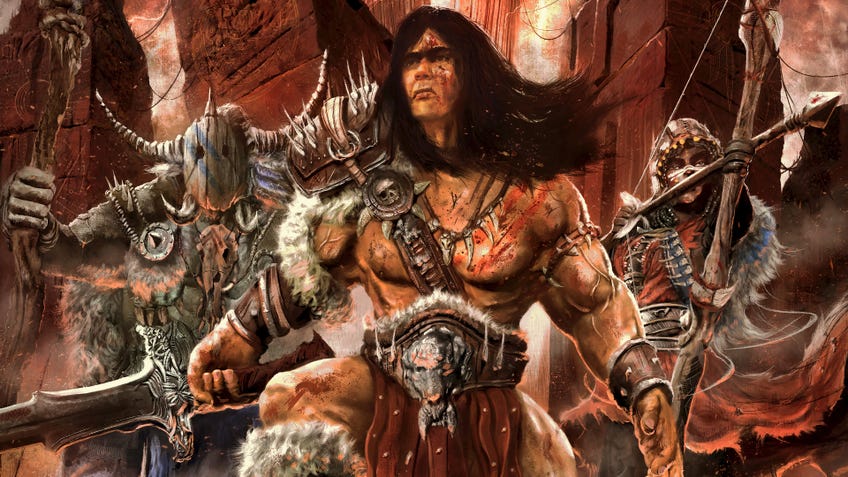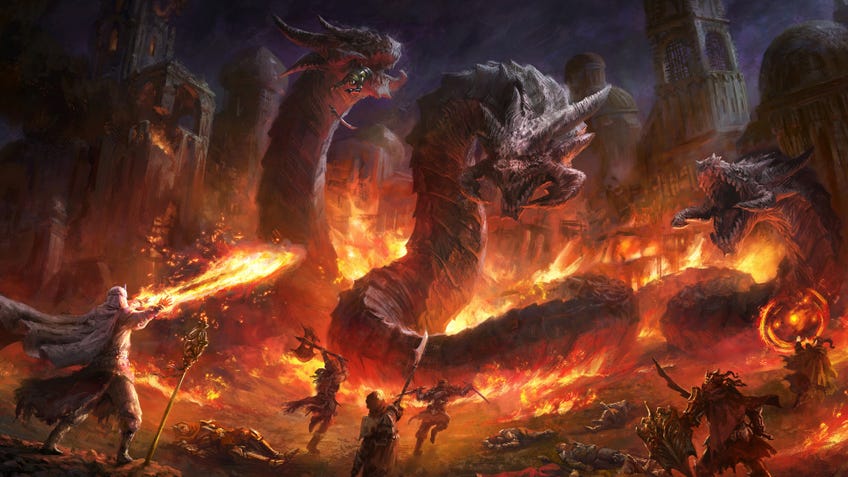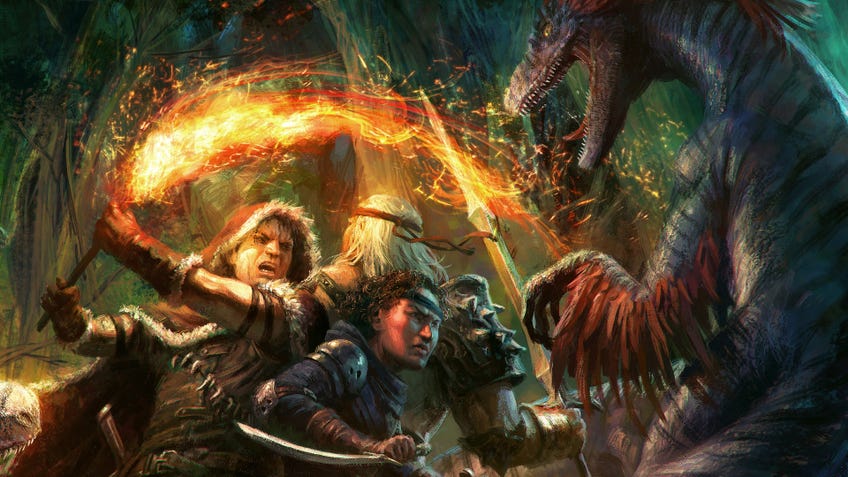SPONSORED: Gritty fantasy RPG Blood and Doom wants to feel like discovering D&D for the first time
Action, mystery and creative roleplaying meet.
This article is sponsored by Blood and Doom. Find out more and back Blood and Doom on Kickstarter. You can download its Primer bundle - including extensive extracts from the RPG's three planned core releases and two playable adventures - for free from DriveThruRPG right now.
New dark fantasy RPG Blood and Doom hopes to revive the gritty action and immersive mystery of roleplaying classics.
Set in the doomed fantasy world of Athyr, Blood and Doom aims to combine the sword-and-sorcery battles of games like D&D with the supernatural cults-and-conspiracy storytelling of horror titles such as Call of Cthulhu. The standalone RPG sees players control human characters who encounter otherworldly places and beings as they investigate various mysteries.
Combat is designed to be fast-paced and deadly, with characters able to utilise a variety of weapons, powers and spells in creative ways. The nature of the world means characters can suffer both physical and mental trauma, tracked with individual mechanics.
Gameplay is driven by the players, with the players - rather than the Doomsayer, the game’s GM - making most dice rolls and freely deciding which of their character’s skills is most applicable to a situation. Rather than an initiative order determined randomly by dice rolls, combat turns are ordered in a more dynamic and fluid way that can change to best support the action and story.
Blood and Doom’s dice rolls use a pool of 10-sided dice, with an 8 or 9 on each die representing one success - and 10 counting as a double success. One die in the pool is marked with a different colour, denoting it as a ‘setback die’. On a failed roll, the setback die can lead to additional negative consequences. Additional successes can also trigger weapon attributes such as Impaling or Vicious, leading to additional attacks, advantages gained by knocking a foe down and brutal finishers.

The game’s pool of 15 core character abilities looks to expand on classic RPG traits such as charisma, dexterity and wisdom with more “nuanced” descriptors such as heart, mystique, courage and willpower.
These abilities combine with skills broken into two categories - Adventuring Skills and Equipment Skills - that influence a character’s actions and the outcome of their dice roll. The flexible nature of skills means that characters can naturally spec outside of their typical classes - with magic-users able to excel in hand-to-hand combat, for example. Especially powerful spells and powers cost blood points, a slowly refilled resource pool shared among the players that represent the characters’ life force and will.
The Doomsayer decides which ability is required, while the player chooses the skill used. Rolls can be further modified by positive ‘edges’ and negative ‘challenges’ that increase or decrease the number of dice rolled. A limited pool of Doom Points can be spent to re-roll all unsuccessful dice or add additional dice to try and succeed on a failed roll or gain extra momentum - or can even be requested as a specific Doom roll by the Doomsayer - representing the group’s motivation to survive in the crumbling world.

Blood and Doom’s setting of Athyr is said to be inspired by cultures outside of western Europe, including ancient Arabia, Persia and India, along with Chinese, Malaysian and Japanese cultures. The vast world is made up of seven realms, five of which will be detailed in the game’s core books. (The game’s creators tease the mysterious Keldor and pirate-infested Taliath as too cut off from outsiders and unwelcoming to be covered at first.)
Creator Ferruccio Argento described the game - which began life as a campaign for Powered by the Apocalypse, before moving to its own gameplay system - as harkening back to the “more obscure and cultish” nature of early Dungeons & Dragons, aiming to recapture the “mystique” the designer feels has been lost in later editions. Argento also cited Call of Cthulhu, Vampire: The Masquerade and Numenera as key influences.
“The title Blood and Doom indicates that our TTRPG is more out there on the edge,’ Ferruccio said. ‘I’m hoping that it’ll give people the feeling that they used to have back in the day when they were first introduced to the older Dungeons & Dragons editions.”

Blood and Doom will launch a Kickstarter campaign on April 4th, looking to crowdfund three books for the upcoming RPG.
A core rulebook will include everything needed to play, covering the game’s rules, classes and Doomsayer guidance. The Doomsayer’s Codex: Guide to Athyr will provide additional background and lore on Athyr, including details on the setting’s five major regions, their locations and cities, and the monsters that inhabit them.
A second Doomsayer’s Codex, Twelve Pillars of Doom, will introduce the 12 largest cults in the world - the history, aims and traditions of each detailed across dozens of pages - and the Herald of Doom they worship. The cults’ growing power via dark rituals can raise a region’s doom level, signifying the corruption of its lands and inhabitants. However, Doomsayers can choose to avoid the inclusion of cults if they prefer.
Ahead of Blood and Doom’s Kickstarter, three primer books have been made available for Blood and Doom, including extracts from the three planned core releases and two playable adventures. The primer books can be downloaded for free from DriveThruRPG now.


